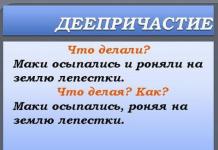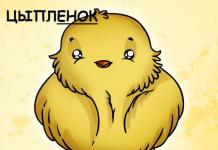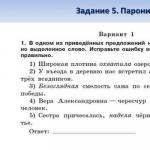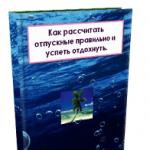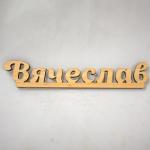Slavic languages are related languages of the Indo-European family. More than 400 million people speak Slavic languages.
Slavic languages are distinguished by the similarity of word structure, the use of grammatical categories, sentence structure, semantics (meaning), phonetics, and morphonological alternations. This closeness is explained by the unity of origin of the Slavic languages and their contacts with each other.
Based on the degree of proximity to each other, Slavic languages are divided into 3 groups: East Slavic, South Slavic and West Slavic.
Each Slavic language has its own literary language (a processed part of the national language with written norms; the language of all manifestations of culture) and its own territorial dialects, which are not the same within each Slavic language.
Origin and history of Slavic languages
Slavic languages are closest to the Baltic languages. Both are part of the Indo-European family of languages. From the Indo-European proto-language, the Balto-Slavic proto-language first emerged, which later split into Proto-Baltic and Proto-Slavic. But not all scientists agree with this. They explain the special closeness of these proto-languages by the long-term contact of the ancient Balts and Slavs, and deny the existence of the Balto-Slavic language.
But what is clear is that from one of the Indo-European dialects (Proto-Slavic) the Proto-Slavic language was formed, which is the ancestor of all modern Slavic languages.
The history of the Proto-Slavic language was long. For a long time, the Proto-Slavic language developed as a single dialect. Dialectal variants arose later.
In the second half of the 1st millennium AD. e. Early Slavic states began to form in Southeast and Eastern Europe. Then the process of dividing the Proto-Slavic language into independent Slavic languages began.
Slavic languages have retained significant similarities with each other, but at the same time, each of them has unique features.
Eastern group of Slavic languages

Russian (250 million people)
Ukrainian (45 million people)
Belarusian (6.4 million people).
The writing of all East Slavic languages is based on the Cyrillic alphabet.
Differences between East Slavic languages and other Slavic languages:
reduction of vowels (akanye);
the presence of Church Slavonicisms in the vocabulary;
free dynamic stress.
Western group of Slavic languages
Polish (40 million people)
Slovak (5.2 million people)
Czech (9.5 million people)
The writing of all West Slavic languages is based on the Latin alphabet.
Differences between West Slavic languages and other Slavic languages:
In Polish - the presence of nasal vowels and two rows of sibilant consonants; fixed stress on the penultimate syllable. In Czech, the stress is fixed on the first syllable; presence of long and short vowels. The Slovak language has the same features as the Czech language.
Southern group of Slavic languages
Serbo-Croatian (21 million people)
Bulgarian (8.5 million people)
Macedonian (2 million people)
Slovenian (2.2 million people)
Written language: Bulgarian and Macedonian - Cyrillic, Serbo-Croatian - Cyrillic/Latin, Slovenian - Latin.
Differences between South Slavic languages and other Slavic languages:
Serbo-Croatian has free musical stress. In the Bulgarian language there are no cases, a variety of verb forms and the absence of an infinitive (undefined form of the verb), free dynamic stress. Macedonian language - the same as in the Bulgarian language + fixed stress (no further than the third syllable from the end of the word). The Slovenian language has many dialects, the presence of a dual number, and free musical stress.
Writing of Slavic languages
The creators of Slavic writing were the brothers Cyril (Constantine the Philosopher) and Methodius. They translated liturgical texts from Greek into Slavic for the needs of Great Moravia.

Prayer in Old Church Slavonic
Great Moravia is a Slavic state that existed in 822-907. on the Middle Danube. At its best, it included the territories of modern Hungary, Slovakia, the Czech Republic, Lesser Poland, part of Ukraine and the historical region of Silesia.
Great Moravia had a great influence on the cultural development of the entire Slavic world.

Great Moravia
The new literary language was based on the South Macedonian dialect, but in Great Moravia it acquired many local linguistic features. Later it was further developed in Bulgaria. A rich original and translated literature was created in this language (Old Church Slavonic) in Moravia, Bulgaria, Rus', and Serbia. There were two Slavic alphabets: Glagolitic and Cyrillic.

The most ancient Old Church Slavonic texts date back to the 10th century. Since the 11th century. More Slavic monuments have survived.
Modern Slavic languages use alphabets based on Cyrillic and Latin. Glagolitic script is used in Catholic worship in Montenegro and several coastal areas in Croatia. In Bosnia, for some time, in parallel with the Cyrillic and Latin alphabet, the Arabic alphabet was also used (in 1463, Bosnia completely lost its independence and became part of the Ottoman Empire as an administrative unit).
Slavic literary languages
Slavic literary languages did not always have strict norms. Sometimes the literary language in Slavic countries was a foreign language (in Rus' - Old Church Slavonic, in the Czech Republic and Poland - Latin).
The Russian literary language had a complex evolution. It absorbed folk elements, elements of the Old Church Slavonic language, and was influenced by many European languages.
In the Czech Republic in the 18th century. German was dominant. During the period of national revival in the Czech Republic, the language of the 16th century was artificially revived, which at that time was already far from the national language.
The Slovak literary language developed on the basis of the folk language. In Serbia until the 19th century. The Church Slavonic language was dominant. In the 18th century the process of bringing this language closer to the folk one began. As a result of the reform carried out by Vuk Karadzic in the mid-19th century, a new literary language was created.
The Macedonian literary language was finally formed only in the middle of the 20th century.
But there are also a number of small Slavic literary languages (microlanguages), which function along with national literary languages in small ethnic groups. This is, for example, the Polesie microlanguage, Podlyashian in Belarus; Rusyn - in Ukraine; Wichsky - in Poland; Banat-Bulgarian microlanguage - in Bulgaria, etc.
|
Experts - linguists and historians - are still arguing where the ancestral home of the Slavs was located, that is, the territory on which they lived as a single people and from where they dispersed, forming separate peoples and languages. Some scientists place it between the Vistula and the middle reaches of the Dnieper, others - between the Vistula in the east and the Oder in the west. Now many experts believe that the ancestral home of the Slavs was in Pannonia, on the Middle Danube, from where they moved to the north and east. One of the proofs that the Slavs were in Central Europe is, for example, the lexical similarity between the Slavic languages and the languages of Western Europe. Compare the Latin and Russian words bostis - “guest”, struere - “build”, fomus - “horn”, paludes - “flood”. The problem of the ancestral home of the Slavs is very complex, and its solution depends on the efforts of scientists of various specialties - historians, archaeologists, linguists, ethnographers, folklorists, anthropologists. Linguistics plays a special role in these searches. In the modern world, there are from 10 to 13 living Slavic languages, depending on the status assigned to several of them, an independent language or a dialect. Thus, official Bulgarian studies do not recognize the Macedonian language as an independent language, considering it as a dialect of Bulgarian. Among the Slavic languages there are also dead ones that no one speaks anymore. This was the first literary language of the Slavs. Russians call it Old Slavonic, and Bulgarians call it Old Bulgarian. It is based on the South Slavic dialects of old Macedonia. It was this language in the 9th century. The sacred texts were translated by Greek monks - the brothers Cyril and Methodius, who created the Slavic alphabet. Their mission to create a literary language for all Slavs became possible due to the fact that in those days Slavic speech was still relatively unified. The Old Church Slavonic language did not exist in the form of living folk speech; it always remained the language of the Church, culture and writing. However, this is not the only dead Slavic language. In the West Slavic zone, in the north of modern Germany, numerous and powerful Slavic tribes once lived. Subsequently, they were almost completely absorbed by the Germanic ethnic group. Their immediate relatives are probably the present-day Lusatians and Kashubians. The disappeared tribes did not know writing. Only one of the dialects - Polabian (the name is derived from the Elbe River, Laba in Slavic) - has reached us in small dictionaries and records of texts made at the end of the 17th - beginning of the 18th centuries. This is a valuable, although rather meager, source of knowledge about the Slavic languages of the past. Among the Slavic languages, Russian is closest to Belarusian and Ukrainian. The three of them form the East Slavic subgroup. Russian is one of the largest languages in the world: in terms of the number of speakers it ranks fifth, behind only Chinese, English, Hindustani and Spanish. Ukrainian in this hierarchy is among the top twenty, i.e. it also belongs to very large languages. In addition to the East Slavic subgroup, the West Slavic and South Slavic subgroups are traditionally distinguished. However, if the East Slavic languages go back to their common ancestor - the Old Russian (“East Slavic”) language, then the same cannot be said about the other two groups. In their origins there were no special Proto-Western and Proto-South Slavic languages. Although the languages of each of these subgroups have a number of features, some linguists tend to view the subgroups themselves not as genetic, but primarily as geographical unities. When the West Slavic and South Slavic subgroups were formed, along with the processes of language divergence (as linguists say, divergence), the processes of their rapprochement (convergence) played an important role. |
|
A. Eastern subgroup 1) R u s k i y; adverbs: northern (great) Russian– “surrounding” and southern (great) Russian– “screaming”; The Russian literary language developed on the basis of the transitional dialects of Moscow and its environs, where from the south and southeast the Tula, Kursk, Oryol and Ryazan dialects spread features that were alien to the northern dialects, which were the dialectal basis of the Moscow dialect, and displaced some of the features of the latter, as well as by mastering elements of the Church Slavonic literary language; in addition, into the Russian literary language in the 16th–18th centuries. various foreign language elements were included; writing based on the Russian alphabet, processed from the Slavic - “Cyrillic” under Peter the Great; the most ancient monuments of the 11th century. (they also apply to the Ukrainian and Belarusian languages); the state language of the Russian Federation, an interethnic language for communication between the peoples of the Russian Federation and adjacent territories of the former USSR, one of the world languages. 2) Ukrainian (or Ukrainian; before the revolution of 1917 - Little Russian or Little Russian; three main dialects: northern, southeastern, southwestern; The literary language began to take shape in the 14th century; the modern literary language has existed since the end of the 18th century. on the basis of the Dnieper dialects of the south-eastern dialect; writing based on the Cyrillic alphabet in its post-Petrine variety. 3) Belarusian; writing since the 14th century. based on the Cyrillic alphabet. Dialects northeast and southwest; literary language - based on Central Belarusian dialects. B. Southern subgroup 4) Bulgarian - formed in the process of contact of Slavic dialects with the language of the Kama Bulgars, from which it received its name; writing based on the Cyrillic alphabet; the most ancient monuments from the 10th century. n. e. 5) Macedonian. 6) Serbo-Croatian; Serbs have a letter based on the Cyrillic alphabet, Croats have a letter based on Latin; the most ancient monuments from the 12th century. 7) Slovenian; writing based on the Latin alphabet; the most ancient monuments from the 10th – 11th centuries. Dead: 8) Old Church Slavonic(or Old Church Slavonic) is the common literary language of the Slavs of the medieval period, which arose on the basis of Thessalonica dialects of the ancient Bulgarian language in connection with the introduction of writing for the Slavs (two alphabets: Glagolitic and Cyrillic) and the translation of church books to promote Christianity among the Slavs in the 9th–10th centuries. n. e., was replaced by Latin among the Western Slavs due to Western influence and the transition to Catholicism; in the form of Church Slavonic - an integral element of the Russian literary language. B. Western subgroup 9) Czech; writing based on the Latin alphabet; the most ancient monuments from the 13th century. 10) Slovakian; writing based on the Latin alphabet. 11) Polish; writing based on the Latin alphabet; the most ancient monuments from the 14th century. 12) Kashubian; lost its independence and became a dialect of the Polish language. 13) Lusatian (abroad: Sorabian, Vendian); two options: Upper Sorbian (or Eastern and Lower Sorbian(or western); writing based on the Latin alphabet. Dead: 14) Polabsky - became extinct in the 18th century, was distributed on both banks of the river. Labs (Elbe) in Germany. 15) Pomeranian dialects - died out in the medieval period due to forced Germanization; were distributed along the southern coast of the Baltic Sea in Pomerania (Pomerania). |
See also:
We've sat here before Slavs, and then Slavic the Volokhi captured the land. One might assume that some groups Slavs, having left the Lower Danube, moved to...
Group Slavic languages unites Russian, Polish, Bulgarian, Serbian. Languages within each language groups closer to each other than the other languages groups.
The sources mention three large political centers that can be considered proto-state associations: Cuiaba (southern group Slavic tribes centered in...
TO Slavic language group also include Belarusians inhabiting the western regions of Russia, and Ukrainians living mainly in the southern regions of the country...
Slaviclegal family includes group Russian law (Russia and its subjects) and Western Slavic rights (Ukraine, Belarus, Bulgaria, new Yugoslavia).
And the Romans left information not only about Slavs, but about the conglomerate of peoples who took part in Slavic movement etc. the Antes were one of the tribes of Western groups.
However, every Slavic nationality in common use somewhat limits the scope of the concept of Slavic studies...
(13.385, * - k.e.) In this fragment all group Slavic toponyms: country Slavs, sea Slavic and the river Slavic(nahr as-sakaliba)...
In Russia, the first mention of the word “ group"in explanatory dictionaries of the Russian language dates back only to 1847. In the Dictionary of Church- Slavic and the Russian language" this word is given in three...
As for the type of modern Slavic nationalities, then it is still far from being fully studied. individuals, Mr. Vorobiev found that this group also differs from the general mass by a larger...
Mythological Dictionary. Slavic mythology. Danube. At different groups Slavs, especially among the southern and western ones, motives of women, abundance and peacefulness were associated with D.
Apparently, there was a repeated influx of groups Slavic population from outside.
Slavicthere is no territory of mounds - Slavs are in their own basin of the Western Bug 67. Both groups Korczak monuments are separated by empty ones.
Southwestern group balto- Slavic tribes was cut off from the rest of the massif and began to develop independently of the others.
There are three chronological groups sources: " Slavic" - until the 9th century, "Varangian-Russian" - from the 9th to the 11th centuries, "Old Russian" - from the 11th to the 13th centuries...
Overall new groups populations were early Slavic, and the local Baltic-Finnish population does not leave the region.
On the right bank it is a single, not yet divided into local variants Slavic culture VI-VII centuries like Korczak. Therefore, it seems that group Slavs, who came to...
The Greek word "ant" means the same thing as Slavic"clearing". Preserved. Slavs settled small groups in villages; defend against the Russians
Yiddish is a variety of German with some words from Hebrew, and in Eastern Europe also with words Slavic groups.
The Slavic group of languages is a major branch of the Indo-European languages, since the Slavs are the largest group of people in Europe united by similar speech and culture. More than 400 million people use them.
General information
The Slavic group of languages is a branch of the Indo-European languages used in most of the Balkans, parts of Central Europe and northern Asia. It is most closely related to the Baltic languages (Lithuanian, Latvian and the extinct Old Prussian). Languages belonging to the Slavic group originated from Central and Eastern Europe (Poland, Ukraine) and spread to the remaining territories listed above.
Classification
There are three groups: South Slavic, West Slavic and East Slavic branches.
In contrast to the clearly divergent literary, linguistic boundaries are not always obvious. There are transitional dialects connecting different languages, except in the area where the South Slavs are separated from other Slavs by Romanians, Hungarians and German-speaking Austrians. But even in these isolated areas there are some remnants of the old dialectal continuity (for example, the similarity between Russian and Bulgarian).
It should therefore be noted that the traditional classification into three separate branches should not be considered as a true model of historical development. It is more correct to imagine it as a process in which differentiation and reintegration of dialects constantly took place, as a result of which the Slavic group of languages has a striking homogeneity throughout the territory of its distribution. For centuries, the paths of different peoples crossed, and their cultures mixed.

Differences
But it would still be an exaggeration to assume that communication between any two speakers of different Slavic languages is possible without any linguistic difficulties. Many differences in phonetics, grammar and vocabulary can cause misunderstandings even in a simple conversation, not to mention difficulties in journalistic, technical and artistic speech. Thus, the Russian word “green” is recognizable to all Slavs, but “red” means “beautiful” in other languages. Suknja is “skirt” in Serbo-Croatian, “coat” in Slovenian, a similar expression “suknya” is “dress” in Ukrainian.
Eastern group of Slavic languages
It includes Russian, Ukrainian and Belarusian. Russian is the native language of nearly 160 million people, including many residents of countries that were part of the former Soviet Union. Its main dialects are northern, southern and transitional central group. It also includes the Moscow dialect, on which the literary language is based. In total, about 260 million people speak Russian in the world.

In addition to the “great and mighty”, the Eastern Slavic group of languages includes two more large languages.
- Ukrainian, which is divided into northern, southwestern, southeastern and Carpathian dialects. The literary form is based on the Kiev-Poltava dialect. More than 37 million people speak Ukrainian in Ukraine and neighboring countries, and more than 350,000 people speak the language in Canada and the United States. This is explained by the presence of a large ethnic community of migrants who left the country at the end of the 19th century. The Carpathian dialect, which is also called Carpatho-Rusyn, is sometimes considered a separate language.
- Belarusian is spoken by about seven million people in Belarus. Its main dialects are: southwestern, some features of which can be explained by its proximity to Polish lands, and northern. The Minsk dialect, which serves as the basis for the literary language, lies on the border of these two groups.
West Slavic branch
It includes Polish and other Lechitic (Kashubian and its extinct variant Slovinian), Lusatian and Czechoslovak dialects. This Slavic group is also quite common. More than 40 million people speak Polish not only in Poland and other parts of Eastern Europe (particularly Lithuania, the Czech Republic and Belarus), but also in France, the USA and Canada. It is also divided into several subgroups.
Polish dialects
The main ones are northwestern, southeastern, Silesian and Masovian. The Kashubian dialect is considered part of the Pomeranian languages, which, like Polish, are classified as Lechitic. Its speakers live west of Gdansk and on the Baltic Sea coast.
The extinct Slovinian dialect belonged to the northern group of Kashubian dialects, which differs from the southern one. Another unused Lechitic language is Polabian, which was spoken in the 17th and 18th centuries. Slavs who lived in the Elbe River area.
Its name is Serbian, which is still spoken by the people of Lusatia in East Germany. It has two literary (used in Bautzen and the surrounding area) and Lower Sorbian (common in Cottbus).

Czechoslovakian group of languages
It includes:
- Czech, spoken by about 12 million people in the Czech Republic. His dialects are Bohemian, Moravian and Silesian. The literary language was formed in the 16th century in Central Bohemia on the basis of the Prague dialect.
- Slovak, it is used by about 6 million people, the majority are residents of Slovakia. Literary speech was formed on the basis of the dialect of Central Slovakia in the middle of the 19th century. Western Slovak dialects are similar to Moravian and differ from central and eastern ones, which share features with Polish and Ukrainian.
South Slavic group of languages
Among the three main ones, it is the smallest in terms of the number of native speakers. But this is an interesting group of Slavic languages, the list of which, as well as their dialects, is very extensive.

They are classified as follows:
1. Eastern subgroup. These include:

2. Western subgroup:
- Serbo-Croatian language - about 20 million people use it. The basis for the literary version was the Shtokavian dialect, which is widespread in most of the Bosnian, Serbian, Croatian and Montenegrin territories.
- Slovene is a language spoken by more than 2.2 million people in Slovenia and surrounding areas of Italy and Austria. It shares some common features with the dialects of Croatia and includes many dialects with large differences between them. In Slovenian (in particular its western and northwestern dialects) traces of old connections with the West Slavic languages (Czech and Slovak) can be found.
INSTITUTE OF SLAVIC STUDIES OF THE USSR ACADEMY OF SCIENCES
Kapitolina Ivanovna Khodova
LANGUAGE RELATIONSHIP
SLAVIC PEOPLES
(BASED ON THE DICTIONARY)
MOSCOW-1960
CONVENTIONAL ABBREVIATIONS IN LANGUAGE NAMES
Albanian - Albanian porridge. - Kashubian
English - English Latin. - Latin
Anglo-Saxon - Anglo-Saxon Latvian. - Latvian
Armenians - Armenian lit. - Lithuanian
Belarusian - Belarusian German - German
Bulgarian - Bulgarian Lower Luzh. - Lower Sorbian
upper meadow - Upper Sorbian New Persian. -New Persian
Goth. - Gothic floor. - Polish
Greek - Greek Serbohorvian. - Serbo-Croatian
date - Danish Slovak. - Slovak
ancient upper - Old High German Slovenian - Slovenian
Old English - Old Irish Staroslav. - Old Church Slavonic
Old Prussian - Old Prussian Ukrainian - Ukrainian
Old Russian - Old Russian Russian -Russian
Czech - Czech.
Slavic peoples inhabiting vast areas of Eastern and Central Europe, the Balkan Peninsula, Siberia, Central Asia, and the Far East speak languages that have pronounced similarities in the field of sound composition, grammatical structure and vocabulary. The similarity of the Slavic languages is the most important manifestation of their mutual kinship.
Slavic languages belong to the family of Indo-European languages. In addition to the Slavic ones, the same family also includes Indian (ancient Indian: Vedic and Sanskrit, Central Indian: Pali, Prakrit, New Indian: Hindi, Urdu, Bengali, etc.), Iranian (Old Persian, Avestan, Middle Persian, New Persian, and also Afghan, Tajik, Ossetian, etc.), Germanic (ancient: Gothic, High German, Low German, Anglo-Saxon; modern: German, Dutch, English, Danish, Swedish, Norwegian, etc.), Romanesque (dead Latin and living: French, Italian, Spanish , Romanian, Portuguese, etc.), Celtic languages, represented by Irish, Cymric and Breton, Greek (with Ancient Greek and Central Greek), Armenian, Albanian, Baltic languages and some others.
Of the languages of the Indo-European family, the Baltic ones are closest to the Slavic ones: modern Lithuanian and Latvian and extinct Old Prussian.
The Indo-European family of languages arose through the development of language groups and individual languages, rooted in the common Indo-European base language (common Indo-European proto-language). The separation of the Slavic language group from the common Indo-European base language occurred long before our era.
Within the Slavic language group there are several groups of languages. The most accepted division of Slavic languages into 3 groups: East Slavic, South Slavic and West Slavic. The East Slavic group includes Russian, Ukrainian and Belarusian languages; to the South Slavic - Bulgarian, Macedonian, Serbo-Croatian and Slovenian; to the West Slavic - Czech, Slovak, Upper Sorbian, Lower Sorbian, Polish and Kashubian. The West Slavic group also included the extinct Polabian language, whose speakers, the Polabian Slavs, occupied the territory between the Elbe (Laba in Slavic) rivers, the Oder and the Baltic Sea.
The South Slavic language group includes the Old Slavic literary language, which has been preserved in written monuments since the end of the 10th century. He captured the ancient Macedonian-Bulgarian dialect and the features of some Slavic languages that were in the 9th century. in the early stages of its independent history.
The division of Slavic languages into three groups is based on the differences in some sound processes that took place in these languages in ancient times, and on the commonality of some trends in their development in a later period.
In addition to facts of a purely linguistic nature, the geographical principle is also of certain importance when dividing Slavic languages into three groups: the languages of each of the three groups are distributed in adjacent territories.
Each group of Slavic languages is close to other main Slavic language groups in different ways. East Slavic languages are, in some ways, closer to South Slavic than to West Slavic. This proximity lies mainly in some sound phenomena that developed even before the advent of writing (i.e., before the 9th century) both in the south and in the east of the Slavic world, but unknown in the west. However, there are also phenomena that bring East Slavic languages closer to West Slavic ones and together distinguish Eastern and Western languages from southern ones. So, the languages of the Eastern Slavs, forming a compact group with common features, have different points of contact with the South Slavic and West Slavic languages.
The similarities that are so noticeable in the sound composition, grammatical forms and vocabulary of the Slavic languages could not owe their appearance to their independent, isolated appearance in each of the languages.
The means of expression of language are not connected with concepts by nature; There are no necessary, pre-established eternal correspondences between sounds, forms and their meaning.
The initial connection between the sound of linguistic units and their meanings is a conditional connection.
Therefore, the coincidence of several linguistic units taken from different languages, characterized by the sameness or similarity of their meanings, is an important indication of the common origin of these units.
The existence of many similar features in languages is an indication of the relationship of these languages, i.e., that they are the result of several different paths of development of the same language that was in use earlier. In other words, the fact of the similarity of Slavic languages can be considered as an indication of the existence in the past of a single common source language, from which groups of Slavic languages and individual languages developed in complex and varied ways.
The material of the Slavic languages provides ample opportunities for reconstructing the stages of their history and allows us to trace their development from a single source. If, while exploring the past of the Slavic languages, we go deeper and deeper into antiquity, it will become obvious that the older the era, the greater the similarities between individual languages, the closer they are to each other in sound composition, grammar and vocabulary. This leads to the idea of the existence of a state of languages in which they had a common sound composition, a common grammatical system, a common vocabulary and, therefore, constituted a common group of closely related languages or one common language, from which individual languages subsequently developed. Such a common language cannot be restored in all its details, but many of its features have been restored, and the reality of the existence of this language is now beyond doubt. The source language of the Slavic languages, theoretically restored for scientific purposes by means of comparative historical linguistics, is called the common Slavic base language or Proto-Slavic language.
The existence of a base language among the Slavs, in turn, presupposes the presence in ancient times of a single tribe or group of tribes that gave rise to the Slavic peoples and nations of a later time.
The questions of the origin of the Slavs and their ancient history contain many difficulties, and in this area not everything has yet been completely resolved.
The first reliable mentions of the Slavs belong to ancient writers and date back to the 1st and 2nd centuries AD. From more ancient eras of the life of the Slavs, no other evidence has come down other than archaeological finds discovered during excavations of ancient settlements and burials, which reveal some features of the material culture of early historical Slavic settlements (for example, the type of pottery, type of buildings, household tools, decorations, method of burying the dead etc.).
Based on the study of archaeological data, it has been established that the most ancient Slavic tribes formed on the territory of Eastern Europe during the millennia preceding the beginning of our era.
According to the majority of Soviet, Polish and Czechoslovak scientists, the origins of Slavic history should be sought at the end of the 3rd and 2nd millennium BC, when agricultural and pastoral tribes settled in the vast areas between the Dnieper, the Carpathians, the Oder and the southern coast of the Baltic Sea, united by common features their material culture. Later, at the end of the 2nd millennium and in the 1st millennium BC. e., in the same territory lived agricultural tribes, which are considered early Slavic tribes. These tribes were in close contact with the Thracian, Illyrian, Finno-Ugric, Scythian and other neighboring tribes, some of which were subsequently assimilated by the Slavs. The result of this process was the formation at the turn of our era of the main groups of early Slavic tribes that occupied the Vistula basin, the Dnieper region and the Northern Carpathian region. The authors of the beginning of our era knew the Wendish tribe in these places. Later, in the 6th century, the existence of two large Slavic associations was noted here - the Sklavins and the Antes.
The language of the ancient Slavic tribes, formed in the vast expanses of Eastern Europe, was very stable for a long time (before the era of the collapse of Slavic unity), which was reflected in the long-term unchanged preservation of a number of linguistic facts. Probably, mutual contact between the tribes was so close that dialect differences did not appear too sharply.
However, this language should not be imagined as some absolutely motionless unity. Related dialects, slightly different from each other, existed in it. They interacted with the languages of their closest foreign neighbors. It has been established that some borrowings from neighboring languages also penetrated into the Common Slavic language, which were later included in all or many Slavic languages, for example from Germanic languages (Russian, Ukrainian and Belarusian prince, Bulgarian prince, Serbo-Croatian knez “prince”, “ ruler of the region", Slovenian knez, Czech knez "prince", "priest", Slovak knaz, Polish ksiaze "prince", Upper Lawn and Lower Lawn knez "lord", "pater"; Russian hut, Bulgarian hut “dugout”, “hut”, “hut”, Serbo-Croatian hut “room”, “cellar”, Slovenian isba “room”, Czech izba “room”, “izba”, Pol. izba “izba”, “ room", Upper Meadow jspa, spa, Lower Meadow spa, Cash jizba (in the same meanings); from Iranian languages (for example, Russian axe, Belarusian, tapor, Slovenian topor, Czech topor "axe", Upper Meadow. toporo, Slovak topor, Pol., topor) 1. The wide distribution of identical foreign language borrowings throughout the entire space of Slavic languages is sometimes considered as an indication of the duration of the era of ancient Slavic unity2.
When establishing linguistic relationships, special attention is paid to the grammatical structure of languages and their sound system. The most reliable criterion for the relatedness of compared languages is the proximity of the grammatical structure, since of all aspects of the language the grammatical structure is the most stable and is characterized by an extremely gradual and slow pace of development.
An important manifestation of kinship is also the similarity in the vocabulary of languages, expressed in the similarity of ancient roots of words and other word-forming elements or whole words, provided that the grammatical structure of the languages from which these linguistic units are extracted gives the right to consider these languages as related. The material proximity of roots, grammatical formats and whole words complements and reinforces the evidence of linguistic relatedness.
This paper examines some phenomena in the field of vocabulary that indicate the closeness between the Slavic languages in our time and their origin from a single source. A number of examples have been selected from the many thousands of lexical composition of the Slavic languages, illustrating the main paths and processes of development of the oldest Slavic vocabulary and showing the emergence of new vocabulary features across languages, the complexity of related connections between individual languages in the field of vocabulary.
To determine the paths of vocabulary development, it is extremely important to establish the nature and boundaries of the original, Proto-Slavic vocabulary as the starting point in the history of many words.
The ancient dictionary, of course, cannot be restored in its entirety. The development of languages from a single source does not need to be understood in a straightforward and simplistic way. In the process of the historical development of a language from era to era, the words included in it change greatly; the very composition of the dictionary is updated: more and more new units are included in it, while others gradually disappear. In the vocabulary of each individual language from a group of related languages there is a lot that is changed and new, and at the same time it lacks much of what was present in the base language. At the same time, facts of language that are lost without a trace cannot be restored, since restoration is done on the basis of those traces that remain in languages from the ancient era.
Different areas of language develop unevenly. As for the vocabulary, this area is characterized by features of particular mobility and variability. “Life contributes to a change in vocabulary, increasing the number of causes acting on words. Social relations, specialty, and tools change the vocabulary, expel old words or change their meanings, and require the creation of new words. The activity of consciousness constantly receives new incentives to work on the dictionary. In short, there is not a single area where the causes of changes in phenomena would be more complex, numerous and varied,” wrote the French linguist J. Vandries3.
The lexical side of the language is very susceptible to foreign borrowings and extremely permeable to them. Therefore, when we encounter words in several languages that are similar in both sound composition and meaning, we must first of all resolve the question of whether this is the result of borrowing one language from another.
Regarding the question of the possibility of restoring the ancient Indo-European vocabulary, the French linguist A. Meillet noted: “The vocabulary is the most unstable in the language. Words can disappear for a variety of reasons and be replaced by new ones. The original vocabulary may include new words that outnumber the old ones. Thus, in the English language, elements of Latin and French languages, not inferior to it in volume, were layered on the Germanic layer of vocabulary. It even happens that all vocabulary belongs to a different group than grammar; This is how things are in the language of the Armenian Gypsies: the grammar and phonetics in their language are entirely Armenian, and the vocabulary is completely Gypsy.”4.
Meillet's remark about the difficulty of restoring the general vocabulary of the Indo-European languages can, to a certain extent, be applied to the Slavic languages.
Along with the disintegration of the common Slavic base language into separate languages, several words were formed from the same word, connected to each other by a common origin, existing simultaneously, but within different language systems. But one cannot think that all lexical phenomena that coincide in several or all Slavic languages developed from a single language dating back to the period of initial community. Slavic languages throughout their history interacted with the languages of neighboring peoples, being influenced by them. After the emergence of writing, the vocabulary features of the Church Slavonic language, the isolated Slavic languages of neighboring groups, many foreign words, and international vocabulary penetrated into them through literary languages.
However, despite all the external influences, the ancient vocabulary fund of the Slavic languages has been preserved in a significant volume - incomparably larger than the Indo-European vocabulary layer found in modern Indo-European languages. The Slavic dictionary has not experienced major changes during its existence. Along with the entry of a certain number of easily assimilated foreign words and the loss of a number of ancient words in the Slavic languages, the ancient lexical fund was preserved, processed and enriched.
It is very important to understand how the original Slavic vocabulary can be separated from earlier and later vocabulary borrowings.
The high prevalence of a word in related languages cannot yet serve as an indication of its originality and unborrowed nature (cf. the above-mentioned borrowings of the common Slavic period, which are widely represented in modern Slavic languages).
The most general requirement for separating native words from borrowed ones is to find genetically identical (or etymologically identical) linguistic units in several languages, that is, units that go back to the same unit and are the result of its different development in individual languages.
Genetic identity does not imply complete qualitative coincidence. These units must be similar in terms of sound, and the sound similarity must be based on regular, natural sound correspondences observed not only in this example, but in a whole group of linguistic phenomena.
Such linguistic units can be, first of all, individual morphemes, i.e. roots, suffixes, prefixes, endings, and then compounds of morphemes - whole words.
For example, the Russian word gunpowder, Ukrainian gunpowder “dust”, “gunpowder”, Belarusian porakh “gunpowder”, Bulgarian prakh “dust”, “powder”, “dust”, Serbo-Croatian prakh “dust”, “gunpowder”, “powder”, Slovenian prah “dust”, “gunpowder”, Czech prach “dust”, “down”, “gunpowder”, Slovak prach “dust”, “gunpowder”, Polish proch “gunpowder”, “dust”, “ashes”, Upper Sorbian and Lower Sorbian proch “speck of dust”, “dust”, “dust”, “gunpowder”, Kashubian prokh “ashes”, “dust”, “gunpowder” can be considered genetically identical and native Slavic words, since all these words are connected by threads going to each of them (directly or through intermediate stages) from their Proto-Slavic source - the word *porch, restored on the basis of modern Slavic words developed from it.
The change in the original *porch in individual languages is strictly subject to the well-known law of sound correspondences, covering a large group of Slavic words. According to this law, the East Slavic combinations oro between consonants correspond to the South Slavic, as well as Czech and Slovak combinations ra and the northwestern - Polish, Lusatian and Kashubian - combinations ro (the Belarusian combination ora in the word pores is a consequence of the akanya of the Belarusian language, reflected in its orthography). The indicated correspondence is a consequence of the different development of the oldest long syllable or in the middle of a word between consonants in different local conditions.
An important requirement for the original words of this group of languages is also the commonality of the morphological division of words or the presence of common points in their morphological division.
The word gunpowder, which in word-formation terms is currently a root with a zero ending, historically was a combination of morphemes dating back to the period of the common Indo-European base language. Moreover, the root of the word gunpowder coincides not only with the roots of genetically identical Slavic words, but also with the roots of words of Indo-European languages that are similar to them. Thus, common points are revealed in the morphological division of the word not only on Slavic, but also on Indo-European soil, which clearly indicates the original nature of this word and the fact that the proximity of the corresponding words in related languages is not a consequence of borrowing.
Morphemes and words are meaningful units of language. Semantic (notional) correspondences of units having the same origin (genetically identical) presented in related languages must be as accurate as sound correspondences.
The boundaries between languages, the separate use of related languages, make the vocabulary of each of them devoid of direct and living relationships with the vocabulary of other languages.
Under these conditions, original ancient words in related languages often acquire different semantic development. The differences that arise between them are formed through the gradual accumulation of a new quality and the gradual withering away of the old quality in the process of transmission of language from generation to generation. Changes in initial values sometimes reach great depths.
In such cases, it may be necessary to explain the relationships of meanings that occur in modern languages and to prove their development from a single ancient meaning through semantic transitions, the likelihood of which cannot be doubted.
Russian gunpowder and Bulgarian prah are characterized not only by sound similarity, based on the phonetic features of the Russian and Bulgarian languages, but also by a semantic connection, the existence of which becomes an indisputable fact as soon as we turn to the history of these words.
There are common points in the semantics of Russian and Bulgarian words even now: the meanings of “gunpowder” and “powder”, “dust” are united by the idea of loose bodies or individual small particles of solid matter, but in ancient times the Bulgarian and Russian meanings completely coincided: the ancient Russian meaning gunpowder “dust” (cf. in “The Tale of Igor’s Campaign”: Behold, Stribozhi vnutsi, howling... cover the fields with pigs). Subsequently, with the advent of gunpowder, in the Russian language there was a narrowing of the semantics of the word gunpowder, a specialization of its meaning and the loss of the original meaning of “dust”, “powder” (in the Ukrainian, Slovenian, Czech, Slovak, Polish, Lusatian and Kashubian languages, the old and new meaning of this word).
The connection between the meanings of the words of the group under consideration finally convinces us that we are dealing with facts that developed in different ways from the same source, i.e., genetically identical. Thus, along with the principle of phonetic and structural explainability, it is necessary to keep in mind the principle of semantic explainability of the relationships between compared units.
Guided by these basic requirements, it is possible with sufficient confidence to distinguish words whose commonality between these languages is based on the kinship of these languages, from words common to them of a different origin (borrowed).
Back to section

